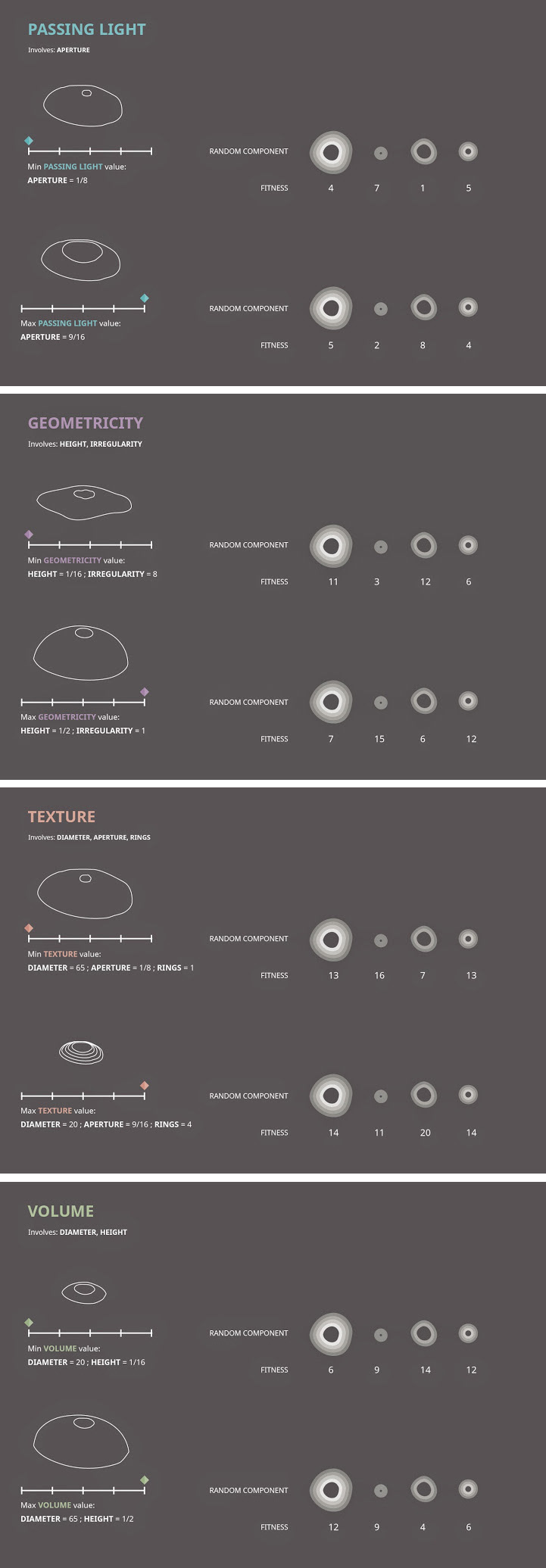Project made in collaboration with Gianluca Monaco and Davide Motta
What is the relation between “natural evolution” and “customization process”?
Following the principles of natural evolution announced by Charles Darwin and its programming implementation defined by John Holland in the 1970’s, we experimented the custom design through the use of Genetic Algorithms (GA) as a concept and tool.
The design topic was a system of ceramic components exploring the new properties that this material can achieve and afford as a surface.

Aristotle’s lantern is the name of the chewing organ of sea urchins, and it comes from a mistranslation from the Aristotle’s descriptions in which he referred to the whole shape of sea urchins, which look like the ancient lamps of Aristotle’s time.
This project takes inspiration from the sea urchins' morphology focusing on the illuminating possibilities suggested by their shape.
This project takes inspiration from the sea urchins' morphology focusing on the illuminating possibilities suggested by their shape.
First step:
Species Codification Process

Second step:
Study how the component is able to define a ceramic system/pattern of variable components.











Third step:
definition of the necessary Fitness Criteria to evaluate each of the solutions/phenotypes of our Population.

Construction Technology
The example shows the pattern application. It would be fixed on a hexagonal grid applied to a vertical and flat wall. However, the system could be adapted for other kind of components with different shapes and dimensions and for different wall curvatures
The example shows the pattern application. It would be fixed on a hexagonal grid applied to a vertical and flat wall. However, the system could be adapted for other kind of components with different shapes and dimensions and for different wall curvatures

Final Interface
We identified a series of sea urchins that live in different oceans and seas all over the world.
The user can select the sea urchin of his reference area and find his personal "Aristotle's lantern" system according to it.
Passing light is the main fitness criterion thought to get a different effect during the day and during the night. The other criteria allow to control the aesthetics of the system taking from each sea urchin the identity of his place.
The user can select the sea urchin of his reference area and find his personal "Aristotle's lantern" system according to it.
Passing light is the main fitness criterion thought to get a different effect during the day and during the night. The other criteria allow to control the aesthetics of the system taking from each sea urchin the identity of his place.



